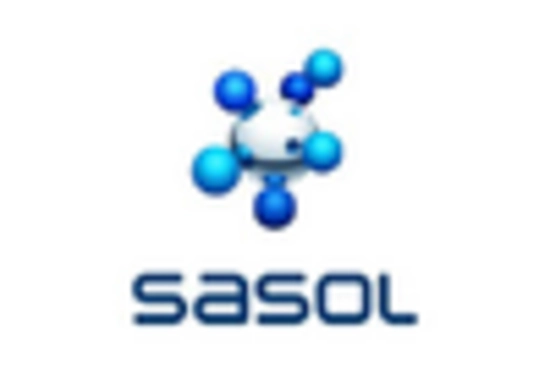Increasing Demand for Energy
The rising demand for energy across various sectors is a primary driver for the Gas Turbine Oil Market. As economies expand, the need for reliable and efficient energy sources intensifies. Gas turbines, known for their efficiency and lower emissions compared to traditional fossil fuels, are increasingly favored. This trend is reflected in the projected growth of the gas turbine market, which is expected to reach USD 30 billion by 2026. Consequently, the demand for high-performance gas turbine oils, which enhance turbine efficiency and longevity, is likely to surge. The Gas Turbine Oil Market must adapt to this increasing demand by innovating and providing oils that meet the evolving specifications of modern gas turbines.
Growth of Renewable Energy Sources
The increasing integration of renewable energy sources into the energy mix is a notable driver for the Gas Turbine Oil Market. As countries strive to meet renewable energy targets, gas turbines are often used as backup power sources due to their quick start-up times and flexibility. This trend is expected to bolster the demand for gas turbine oils, as these turbines require specialized lubricants to operate efficiently. The market for gas turbine oils is projected to expand as the energy sector increasingly relies on gas turbines to complement renewable energy sources. This shift presents opportunities for the Gas Turbine Oil Market to innovate and provide oils that enhance the performance of turbines operating in hybrid energy systems.
Expansion of Power Generation Capacity
The ongoing expansion of power generation capacity, particularly in emerging economies, is a significant driver for the Gas Turbine Oil Market. As nations invest in infrastructure to meet growing energy demands, gas turbines are often the technology of choice due to their efficiency and lower emissions. The International Energy Agency projects that global electricity demand will increase by 30% by 2040, necessitating the installation of additional gas turbine capacity. This expansion will likely lead to a corresponding increase in the demand for gas turbine oils, as operators seek high-quality lubricants to ensure optimal performance and reliability. The Gas Turbine Oil Market must prepare for this growth by enhancing product offerings and ensuring availability to meet the needs of expanding power generation facilities.
Technological Innovations in Lubrication
Technological advancements in lubrication technology are significantly influencing the Gas Turbine Oil Market. Innovations such as synthetic oils and advanced additives are enhancing the performance and lifespan of gas turbine oils. These advancements allow for better thermal stability, oxidation resistance, and improved lubrication properties, which are crucial for the efficient operation of gas turbines. The market for synthetic gas turbine oils is anticipated to grow, driven by their superior performance characteristics. As manufacturers continue to invest in research and development, the Gas Turbine Oil Market is likely to witness the introduction of new formulations that cater to the specific needs of modern gas turbines, thereby enhancing operational efficiency.
Regulatory Compliance and Environmental Standards
Stringent regulatory frameworks and environmental standards are shaping the Gas Turbine Oil Market. Governments worldwide are implementing regulations aimed at reducing emissions and promoting cleaner energy sources. This has led to a shift towards gas turbines, which are more environmentally friendly than coal or oil-based power generation. The market for gas turbine oils is expected to grow as manufacturers seek oils that comply with these regulations while ensuring optimal performance. The demand for environmentally compliant lubricants is projected to increase, with the market for bio-based oils expected to grow at a CAGR of 5% through 2027. Thus, the Gas Turbine Oil Market must focus on developing oils that not only meet performance standards but also adhere to environmental regulations.


















Leave a Comment